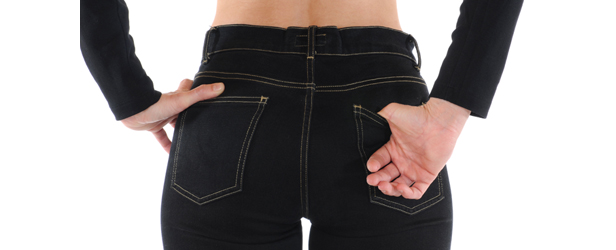
If you watch runners before a race or if you watch baseball, football, or other athletes warming up before a game, you will see that most of them do the butt kick (quadriceps) stretch. In this stretch, they maintain an erect position, stand on one leg, and bend the other leg so that the thigh is pointed directly downward with the knee bent and the heel of the foot close to the buttocks. The athletes then press the foot closer to the buttocks to get a stronger stretch of the quadriceps. In some cases, athletes even pull the thigh backward for an even stronger stretch of the quadriceps and to engage the hip flexors.
This butt kick stretch is constantly recommended in running and fitness magazines and running and sports training books. The popularity of this stretch has even permeated the fitness field, and many recreational athletes and bodybuilders can be seen doing this stretch. You are even likely to have this stretch recommended to you by trainers and coaches.
However, is the butt kick stretch effective for runners and others? The answer is no! There is no questioning the fact that this stretch is effective for fully stretching the quadriceps muscle. When you pull the heel of the foot close to the buttocks, it not only stretches the quadriceps through the normal range of motion but beyond. As a result, if this stretch is continued over a long period of time, you will have overstretched knee joint ligaments, which are crucial for maintaining joint integrity.
The knee joint is an unstable joint and requires strength and relative tightness of the muscles, ligaments, and tendons to maintain joint stability. Once the support structures are weakened, your knee becomes less stable and more prone to injury.
With the butt kick stretch, in addition to overstretching the ligaments, you also overextend the joint. If you look closely at the end position of the stretch when the heel is close to the buttocks, you will see that the knee joint is opened up to its maximum to allow the shin to be right next to the thigh. In some cases, large calves act as a fulcrum to create even more joint stretching that causes the support structures to become even more overstretched.
Doing this stretch every so often is not dangerous, especially if you also squat or assume a seated squat position for extended periods. However, in the down position in the squat, the muscles are under some tension to maintain your balance and stability. Thus, even though the joint and joint structures get stretched out, you still exhibit muscle activity to hold the knee fairly stable.
If you continue to do the butt kick stretch and do not do exercises to strengthen the knee joint after having it stretched out, you may end up with a much looser joint more prone to injury. This is the main reason why the butt kick is not recommended. This quadriceps stretch is also contra-indicated for runners because you never get into this position in running, and it will not help you become a better or safer runner.
For more information on active stretching, particularly the butt kick, read Explosive Running, Women’s Soccer: Using Science to Improve Speed, and Build a Better Athlete.
Elite Fitness Systems strives to be a recognized leader in the strength training industry by providing the highest quality strength training products and services while providing the highest level of customer service in the industry. For the best training equipment, information, and accessories, visit us at www.EliteFTS.com.








